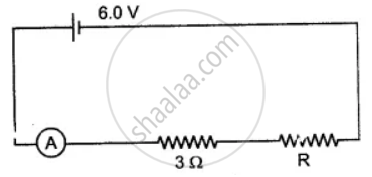Advertisements
Advertisements
Question
Calculate the power used in the 2 Ω resistor in each of the following circuits: a 4 V battery in parallel with 12 Ω and 2 Ω resistors.
Solution
As the battery is connected in parallel to the 12 Î and 2 Î resistors, the potential difference across them will be the same.
Therefore, the power
`P=V^2/R`
`P=4^2/2=16/2= 8 W`
APPEARS IN
RELATED QUESTIONS
How much energy is given to each coulomb of charge passing through a 6 V battery?
By what other name is the unit joule/coulomb called?
How is a voltmeter connected in the circuit to measure the potential difference between two points? Explain with the help of a diagram.
State whether a voltmeter has a high resistance of a low resistance. Give reason for your answer.
The p.d. across a lamp is 12 V. How many joules of electrical energy are changed into heat and light when: a current of 2 A flows through it for 10 s?
How is the electric potential difference between the two points defined? State its S.I. unit.
Suppose there are three resistors A, B, and C having resistances r1, r2, and r3 respectively. If R represents their equivalent resistance, establish the following relation R = r1 + r2 + r3 when joined in series.
The figure shows a circuit. When the circuit is switched on, the ammeter reads 0.5 A.

(i) Calculate the value of the unknown resistor R.
(ii) Calculate the charge passing through the 3 Ω resistor in 120 s.
(iii) Calculate the power dissipated in the 3 Ω resistor.
______ is work done per unit charge.
Twenty-seven drops of the same size are charged at 220 V each. They combine to form a bigger drop. Calculate the potential of the bigger drop.
